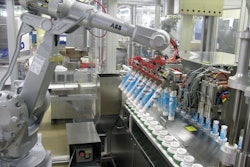
I think materials people and food people operating in the packaging space should have some knowledge in each other’s areas because food and package compatibility is so fundamental when it comes to food packaging. Fatty substances such as mayonnaise will solubilize into polyethylene-based packaging materials because of their similar polarities. Suppose the company that makes the mayonnaise decides to change to a low-fat substitute but doesn’t communicate this to the packaging supplier. The change in formulation will definitely affect the product/package interaction, and a different package might provide better shelf life or have a different effect on the product properties. Likewise, the packaging supplier might decide to reduce cost by changing bottle thickness, and suddenly complaints about rancid product arise.
Food safety issues are also a concern from a regulatory standpoint, not only for food contact regulations but also microbial concerns. The seal integrity, dissolved oxygen in the headspace, or ingress due to permeability can alter the microbial atmosphere and affect the type of bacteria present. In the case of probiotic drinks or health products where live cultures need to be maintained, the package and distribution environment needs to be designed to help maintain the balance of bacteria that is claimed to be present on the label.
Terms and abbreviations are different among various food commodities. The red meat industry uses the term “case ready” and “primal cut,” whereas the thermal processing industry refers to terms such as “D kill level” and “come up time.” All of these terms relate to issues that affect packaging. Case ready usually refers to a type of modified atmosphere package and primal cut is usually a vacuum package. Come up time and D kill levels relate to the amount of time and temperature that the package may experience, thus affecting the type of material best for a particular application. Recently I saw an article that used the abbreviation “HPP” in the title of a packaging trade magazine article. Those tuned into the food industry probably knew that it meant “High Pressure Processing,” which is becoming one of the more commercially successful non-thermal process treatments for foods.
Knowledge of the important trends in the food industry can also help sell and market packaging to the food segment more effectively. Some of the current trends include functional food ingredients, “green” or “clean” labeling of foods, organic foods, healthy food offerings related to cancer, obesity and heart disease prevention, portion sizing, and alternative processing techniques such as microwave and high pressure processing. All of these trends involve packaging innovations or design of a package to either market the product through labeling and graphic design or material selections that help maintain the shelf life for which the product was designed. In the case of “green” or “clean” labeling, the removal of preservatives for more “fresh-like” foods may require the packaging to provide more of the preservation function since the food itself has little or no preservatives.
Kay Cooksey ([email protected]), PhD, is a professor and the Cryovac Chair at Clemson University’s School of Packaging.

























